Peeling Back the Layers: A Taxonomic Update on the Rare Sevendevils Onion
In southwestern Idaho’s Payette National Forest, an inconspicuous but ecologically significant onion quietly thrives in the region’s wet meadows. Sevendevils onion (Allium tolmiei var. persimile)—a rare, endemic variety of the more widespread Tolmie’s onion (Allium tolmiei var. tolmiei)—has long been a taxonomic puzzle for botanists and land managers alike.
Now, thanks to a collaborative study led by the Institute for Applied Ecology (IAE) in partnership with the U.S. Forest Service, that mystery is starting to unravel.
A Taxonomic Puzzle Rooted in History
First described in 1950 by botanist Marion Ownbey, the Sevendevils onion stood out for one compelling reason: its hexaploid chromosome count—a trait not shared with other varieties of Allium tolmiei. Since then, several dichotomous keys have attempted to distinguish it from other Allium tolmiei varieties based on subtle morphological differences. Features like stamen-to-tepal length ratio, scape height, and leaf length relative to the scape have traditionally guided identification in the field. But how well do these classic characters hold up?
Not well, it turns out.
Putting the Keys to the Test
In 2024, our team visited 45 subpopulations of Sevendevils onion and five populations of Tolmie’s onion (Allium tolmiei var tolmiei) across southwestern Idaho. From over 600 individuals, we collected detailed morphological data and submitted representative samples for flow cytometry to confirm ploidy levels. This gave us a rare opportunity to pair ploidy identity with field characteristics—and test the reliability of existing taxonomic keys.
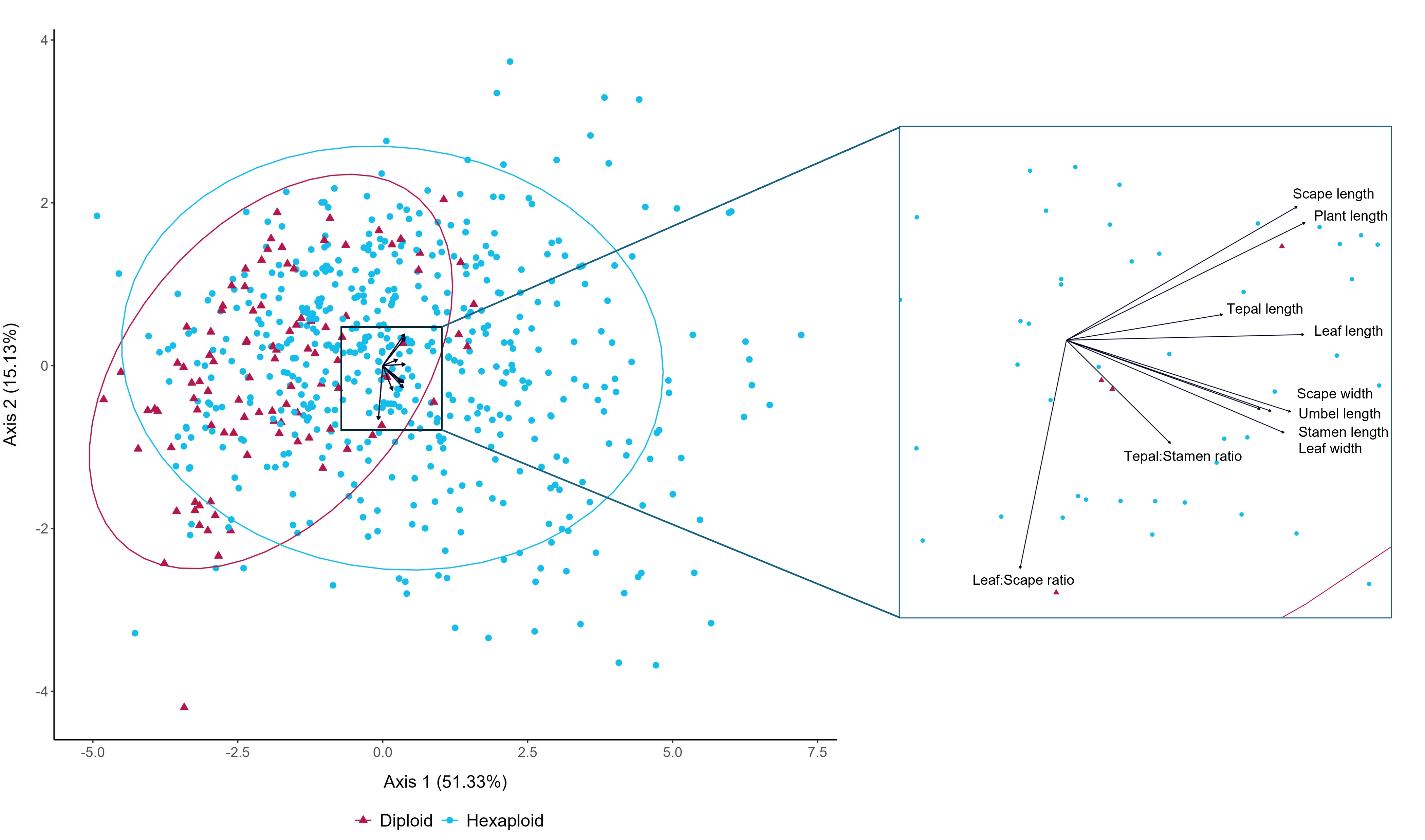
Using multivariate analyses, we assessed how each trait distinguished hexaploids (Sevendevils onion) from diploids (Tolmie’s onion). The following results brought clarity to this question:
- The stamen-to-tepal ratio and scape-to-leaf ratio—longstanding traits in field keys—were not statistically significant in separating the two varieties.
- Plant size traits such as scape length, leaf length, leaf width, and scape width were much more reliable indicators—a common trend seen by polyploids.
- Our Linear Discriminant Analysis model correctly classified over 86% of individuals using size-based traits alone.
- Principal Coordinate Analysis shows that there is notable overlap in morphological features between the two varieties.
Why This Matters for Conservation
This taxonomic nuance has real implications. Sevendevils onion is a Region 4 Forest Service Sensitive Species and ranked S3 (Vulnerable) by the Idaho Natural Heritage Program. This status can limit land use activities such as fuels reduction within the USFS Southwestern Idaho Landscape (SIL) project. Misidentifying Tolmie’s onion as Sevendevils onion could unnecessarily constrain management. Conversely, failing to recognize Sevendevils onion could result in overlooked impacts on a vulnerable species.
Our study suggests that current keys—largely unchanged since 1950—may lead to such errors. A key reevaluation is urgently needed, with greater emphasis on measurable size traits and less reliance on ratios of plant structural measures.
Looking Ahead: A Better Key, a Better Future
In 2025, we’ll expand our sampling of Tolmie’s onion to ensure the model’s geographic robustness and collect more environmental data to refine habitat-based clues. We’ll also reassess Sevendevils onion’s population estimates, currently thought to exceed 460,000 individuals across ~61 element occurrences.
Most importantly, we hope this work informs an updated identification key and supports a possible status reassessment for Sevendevils onion. A more accurate taxonomy will give managers better tools, reduce uncertainty, and help ensure conservation decisions are grounded in solid science.
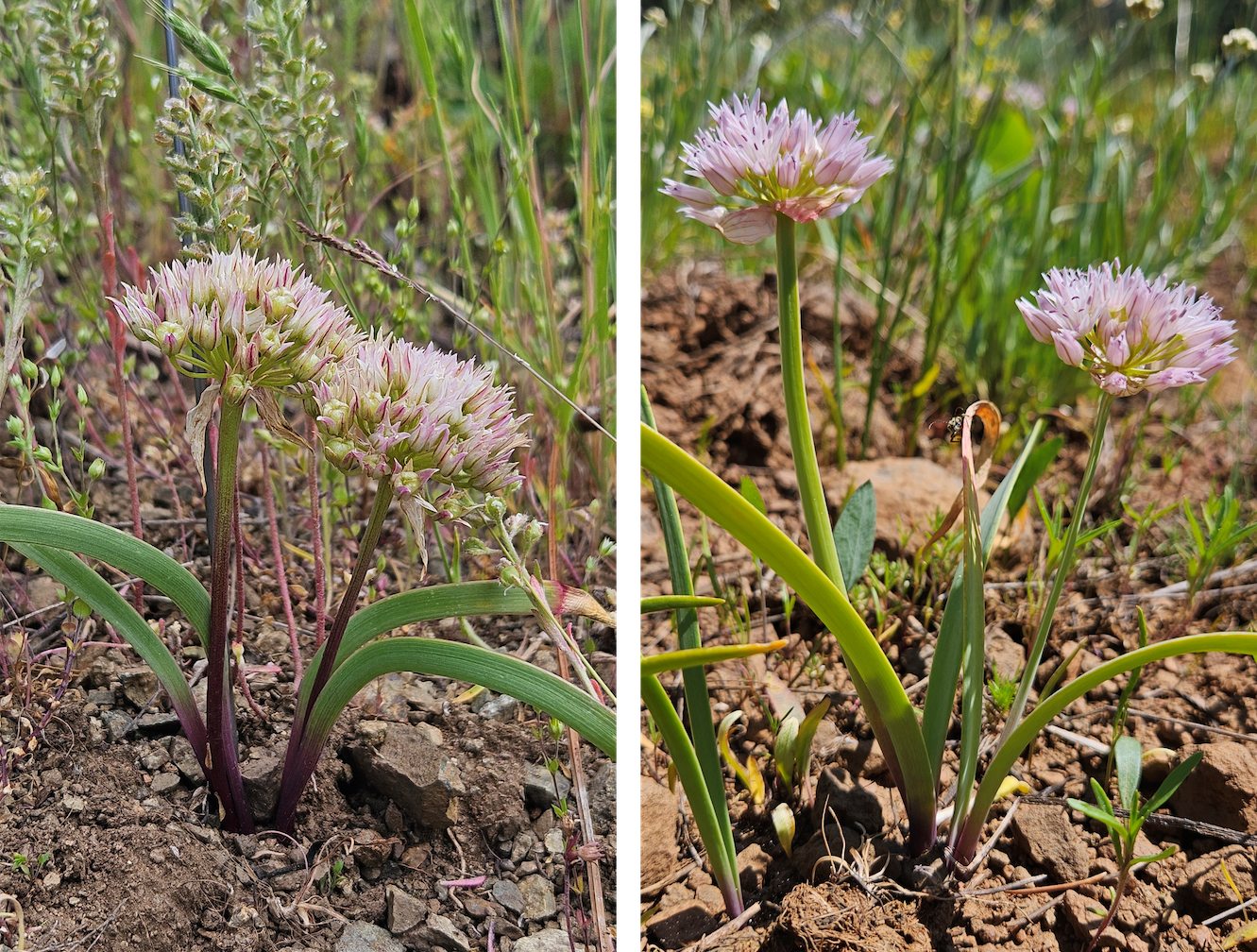
A Community Effort
This work wouldn’t be possible without the dedication of our field teams, the guidance of the Payette National Forest Botany staff, and support from the U.S. Forest Service. We are especially grateful to our partners who helped navigate permits, contributed local knowledge, and assisted with data collection.
By the end of 2025, we aim to deliver a complete reassessment of the sevendevils onion’s status—bringing us one step closer to ensuring its long-term conservation in the beautiful landscapes it calls home
-
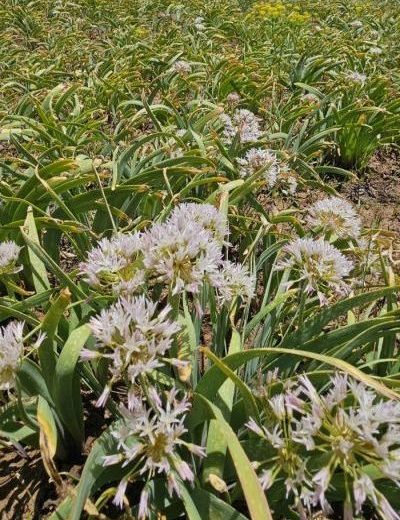
Sevendevils onion (Allium tolmiei var. persimile) across hillside on Payette National Forest. Photo courtesy of the Institute for Applied Ecology. -
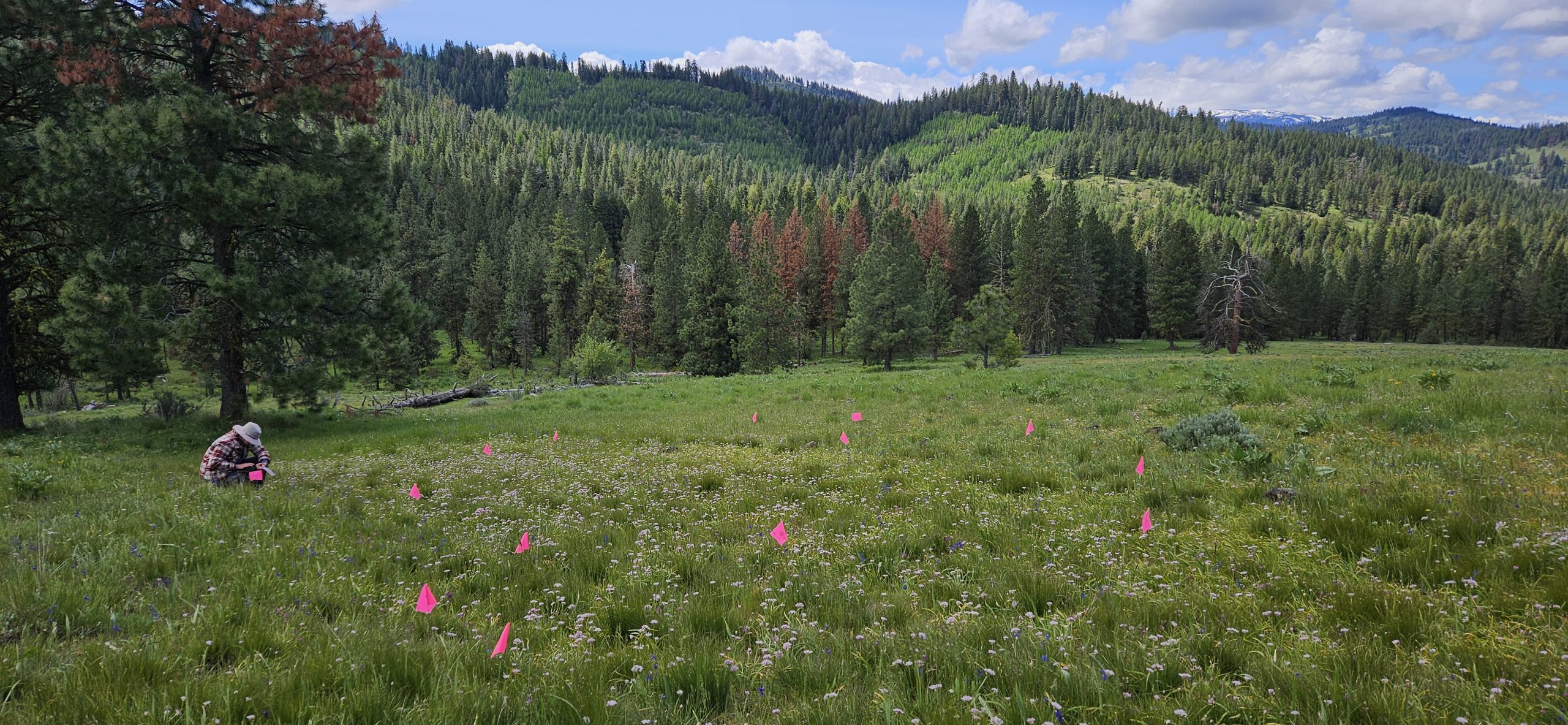
Aynesley Willson collecting morphological data on sevendevils onion at Cow Creek element occurrence (EO). Photo courtesy of the Institute for Applied Ecology. -
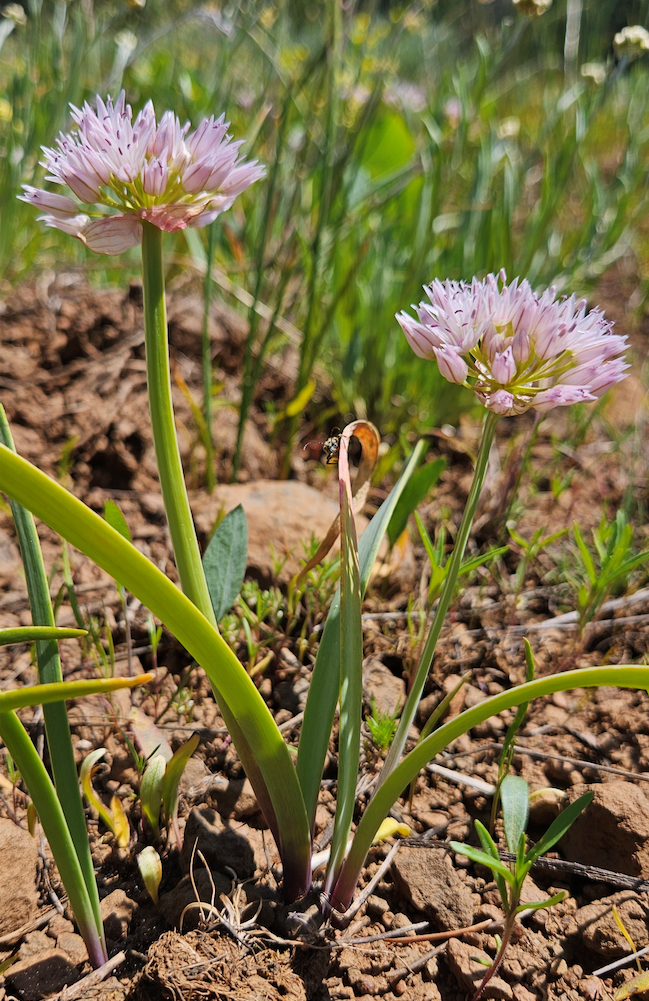
Sevendevils onion (Allium tolmiei var. persimile). Photo courtesy of the Institute for Applied Ecology.